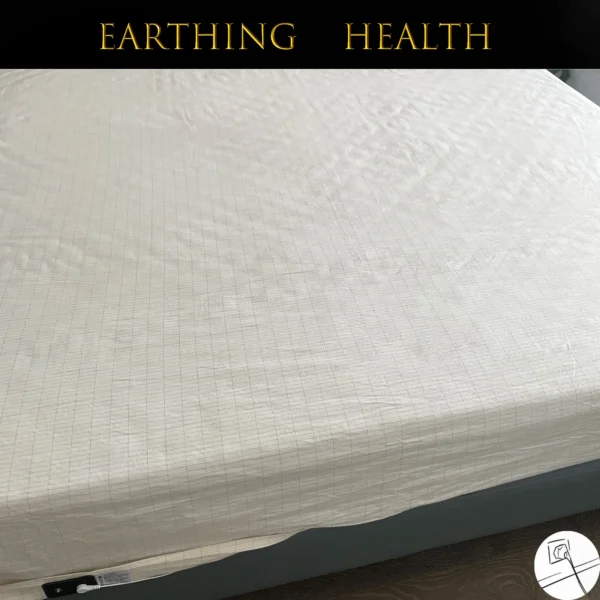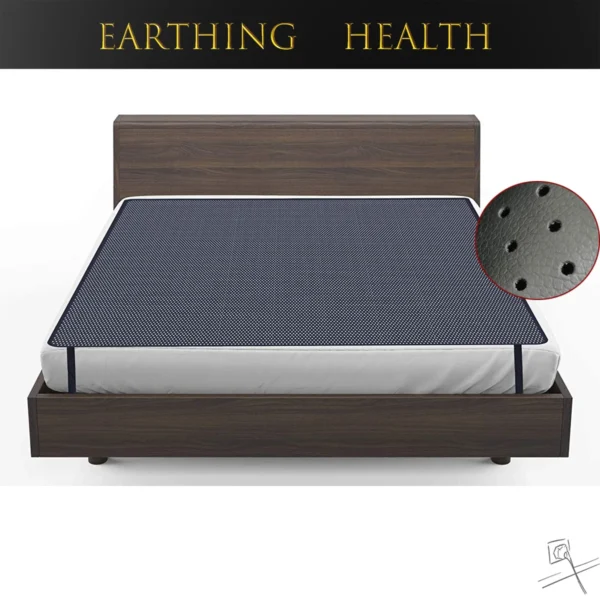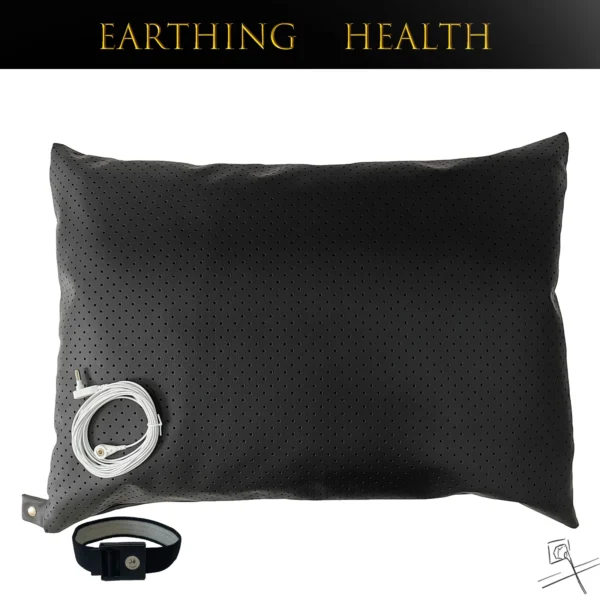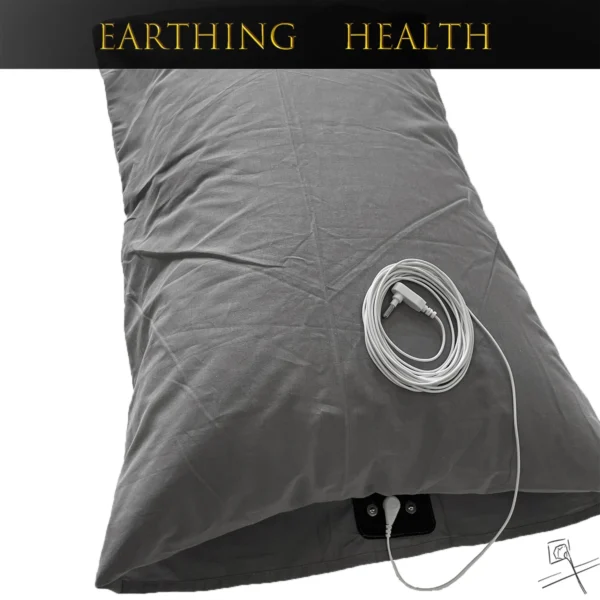
In recent years, the practice of connecting with the Earth’s natural electric field has gained popularity as a method for improving sleep and overall well-being.
This approach, often referred to as earthing, involves making direct contact with the Earth’s surface, which is believed to help neutralize free radicals in the body. This article explores the science behind grounding, its potential benefits, and expert insights to help you make an informed decision.
The Science Behind Grounding
Grounding techniques involve direct contact with the Earth, which can be achieved through walking barefoot on grass, soil, or sand. For those who prefer indoor solutions, specialized mats are available to facilitate this connection.
The practice is thought to reduce inflammation, improve sleep quality, and enhance mood by allowing the body to absorb electrons from the Earth.
Potential Health Benefits
| Benefit | Description | Supporting Research |
|---|---|---|
| Improved Sleep Quality | Many users report falling asleep faster and enjoying deeper, more restorative sleep. | Research indicates that grounding may help regulate cortisol levels, which can enhance sleep patterns. |
| Reduced Inflammation | Individuals often experience a decrease in inflammation markers after regular grounding practices. | Studies suggest a correlation between earthing and reduced inflammatory responses in the body. |
| Enhanced Mood | Grounding practices have been linked to improved mood and lower stress levels. | Research shows that connecting with the Earth can lead to decreased anxiety and stress, contributing to overall emotional well-being. |
Queen Grounding Earthing Sheet
- Material: 100% Organic cotton fabric+silver fiber
- Durable and will hold up to hundreds of washing cycles
Expert Insights on Grounding Practices
What Experts Say
Dr. James Oschman, a biophysicist and author, emphasizes the significance of grounding in our modern lives. He states, “In our increasingly disconnected world, grounding techniques offer a simple way to reconnect with the Earth’s energy, which can have profound effects on our health.” This perspective underscores the relevance of these practices in today’s fast-paced environment.
Selecting the Right Grounding Solution
When considering a grounding solution, keep the following factors in mind:
- Material: Opt for products made from conductive materials that effectively transfer the Earth’s energy.
- Size: Choose a mat or device that suits your intended use, whether for sleeping, working, or relaxation.
- Ease of Use: Ensure the product is user-friendly and compatible with your living space.
User Experiences and Practical Tips
Many individuals who have incorporated grounding into their daily routines report positive changes in their sleep quality and overall health. Here are some practical tips and insights based on user experiences:
Recovery Grounding Earthing Bed Mat
| Item | Specifications |
|---|---|
| Mat Dimensions | 27.5 x 71 inch (70 x 180 cm) / 55 x 71 inch (140 x 180 cm) |
| Pillowcase Dimensions | 20 x 29.5 inch (50 x 75 cm) |
| Color | Black |
| Material | Conductive Carbon Leatherette |
| Set Includes | Grounding mat / Pillowcase + Bracelet + Earthing wire + Optional plug |
How to Incorporate Grounding into Your Daily Routine
Building a sustainable grounding habit doesn’t require a complete lifestyle overhaul—it simply starts by starting small. Carve out just ten to fifteen minutes each day to walk barefoot on truly natural surfaces like dewy grass, warm sand, or even unpainted concrete.
If you live near a park or beach, make this your morning ritual: step outside with no shoes and let your toes sink into the earth as you breathe deeply and feel the subtle transfer of electrons from the ground into your body.
On days when the weather or schedule doesn’t permit an outdoor session, you can replicate part of this experience indoors by standing on a grounding mat for a few minutes while brushing your teeth or waiting for the kettle to boil. Even these brief “top-ups” help reinforce the electrical connection that supports better sleep, reduced stress, and more balanced energy levels.
Once you’ve established that outdoor baseline, using grounding products indoors can seamlessly maintain your connected state throughout the day and night.
Place a grounding mat under your desk so that your bare feet rest on a conductive surface while you work, or swap out your standard sheets for a silver-thread grounding sheet when you climb into bed.
These tools are designed to plug into any properly grounded outlet or an optional ground rod, safely carrying Earth’s natural energy into your mattress or workspace. Over time, this continuous contact helps stabilize cortisol rhythms, enhances parasympathetic heart-rate variability, and eases the chronic aches and pains that can otherwise sabotage your rest or daily productivity.
Sleeping Mask Grounding
- 3D moulded Sleeping Mask
- Material: Cotton
- Brand Name: MERALL
- Best for light sleepers and in-flight rest
Staying consistent is the single most important factor for reaping grounding’s full benefits. Just as you wouldn’t expect lasting fitness improvements from a single workout, nightly grounding sessions compound over time to shift your physiology into a calmer, more restorative mode.
Create simple reminders—such as an alarm on your phone or a sticky note by your bedside—to plug in your grounding sheet each evening. If you’re on the road, carry a portable grounding pad in your suitcase so you can reconnect at hotels or rental apartments.
By weaving grounding into your existing habits—whether that’s your coffee break, afternoon stretch, or pre-bedtime reading—you make it a natural, nearly effortless part of your everyday wellness routine.
Pros and Cons of Grounding Practices
| Pros | Cons |
|---|---|
| May improve sleep quality and duration. | Results can vary from person to person. |
| Potential reduction in inflammation and pain. | Some individuals may find it difficult to maintain a consistent practice. |
| Can enhance mood and reduce stress levels. | Grounding products can be an additional expense. |
| Easy to incorporate into daily life. | Limited scientific research on long-term effects. |
Key Points To Consider
When exploring grounding as a tool for enhancing sleep quality and health, it’s important to recognize both the promise and the current limits of our understanding.
Scientific support for grounding practices has grown steadily over the past two decades, with controlled trials showing benefits such as reduced nighttime cortisol, improved heart-rate variability, and lower inflammation markers.
However, much of the data still comes from small pilot studies or open-label trials, and larger, multi-center research is needed to confirm exactly how grounding influences sleep architecture, immune function, and recovery from stress.
As the evidence base expands—particularly with randomized, placebo-controlled designs—practitioners and enthusiasts alike will gain a clearer picture of which grounding methods deliver the most reliable, reproducible health gains.
Recovery Grounding Earthing Pillowcase
- Treat Snoring: Reduces snoring for better sleep quality.
- Pain Relief: Alleviates various body pains.
- Pressure Relief: Offers significant pressure relief.
- Hormone Regulation: Aids in balancing hormones.
- Improved Sleep Quality: Enhances overall sleep experience.
- Reduced Electrosensitivity: Minimizes effects of electromagnetic fields.
- Better Blood Circulation: Improves blood flow throughout the body.
Equally important is acknowledging the role of personal experience. Grounding is inherently interactive: you’re literally bridging your body’s electrical system with that of the earth, and individual factors—such as skin conductivity, underlying health conditions, and baseline stress levels—can all shape how you respond.
Some people awaken after just one night of sleeping on a conductive sheet with noticeably deeper rest, while others may need several weeks of nightly mat use, barefoot walks on natural terrain, or even supplementary practices like mindful breathing to feel the same effect.
Tracking your own data—whether through a sleep journal, wearable HRV monitor, or simple symptom checklist—helps you fine-tune grounding habits to your unique physiology and lifestyle.
Before you rearrange your entire bedtime routine or invest in every grounding accessory on the market, consider consultation with a qualified healthcare professional.
If you’re managing chronic conditions—particularly those involving implanted electronics like pacemakers, or disorders such as epilepsy—grounding can alter autonomic balance and electrical currents in ways that are generally harmless for healthy users but may require medical oversight in specific cases.
A simple conversation with your physician or physical therapist can clarify any precautions you should take, help you interpret emerging research in light of your personal health history, and ensure that grounding complements, rather than conflicts with, other therapies or medications you’re using.
Fitted Grey Grounding Earthing Pillowcase
- 100% Organic cotton fabric+silver fiber
- Best for Maximum recovery
- Grey
- 50x75cm
Finally, remember that environment matters when it comes to grounding’s effectiveness. Direct contact with truly natural surfaces—moist soil, grass, sand, or unpainted concrete—provides the richest influx of free electrons, but most of us spend our days on insulated flooring and cluttered with pile carpets. That’s why indoor grounding tools—mats, sheets, pillowcases—are designed to replicate the effect of outdoor earthing by linking you electrically to a grounded outlet or rod. Still, wherever possible, make time for barefoot walks in a park or even in your own garden; combining outdoor grounding with indoor practices creates a powerful synergy that can accelerate your journey toward deeper, more restorative sleep.
Conclusion
Grounding practices offer a fascinating approach to enhancing sleep quality and overall health. By reconnecting with the Earth’s natural energy, many individuals report improvements in their well-being. While more research is needed to fully validate these claims, the positive experiences shared by users suggest that grounding can be a valuable addition to a holistic wellness routine.
Grounding practices present an intriguing option for those looking to enhance their sleep quality and overall health. By understanding the science behind these techniques and considering expert insights, you can make an informed decision about whether this practice is right for you.
In the next section, we will explore user experiences and practical tips for incorporating grounding into your daily routine.
As you consider incorporating grounding into your life, remember to start small, stay consistent, and listen to your body. Whether you choose to walk barefoot outdoors or invest in grounding products, the potential benefits may be worth exploring. Embrace the opportunity to reconnect with nature and discover how it can positively impact your health.









